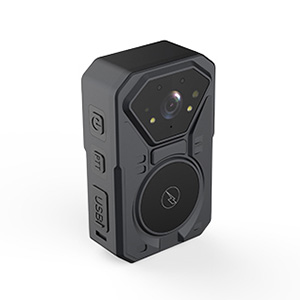
。
# Body-Worn Cameras: Enhancing Transparency and Accountability in Law Enforcement
## Introduction
In recent years, body-worn cameras (BWCs) have become an essential tool for law enforcement agencies worldwide. These small, wearable devices record interactions between police officers and the public, providing an objective account of events. The adoption of BWCs has been driven by the need for greater transparency, accountability, and trust between law enforcement and the communities they serve.
## The Benefits of Body-Worn Cameras
### Increased Transparency
One of the primary advantages of BWCs is the transparency they bring to police operations. By recording interactions, these devices provide an unbiased record of events, which can be crucial in investigations and court proceedings. This transparency helps build public trust and ensures that both officers and civilians are held accountable for their actions.
### Enhanced Accountability
BWCs serve as a deterrent to misconduct by both law enforcement officers and the public. Knowing that their actions are being recorded encourages all parties to behave appropriately. For officers, this means adhering to protocols and using force only when necessary. For civilians, it means cooperating with law enforcement and avoiding confrontational behavior.
### Improved Evidence Collection
Body-worn cameras capture high-quality audio and video evidence that can be invaluable in criminal investigations. This evidence can corroborate witness statements, provide context for incidents, and help resolve disputes about what occurred during an interaction. The footage can also be used for training purposes, helping officers learn from real-life scenarios.
## Challenges and Considerations
### Privacy Concerns
While BWCs offer many benefits, they also raise privacy concerns. Recording interactions in sensitive situations, such as domestic violence incidents or medical emergencies, requires careful consideration. Law enforcement agencies must establish clear policies on when and where cameras should be used, as well as how footage is stored and shared.
### Data Management
The vast amount of data generated by BWCs presents logistical challenges. Storing, managing, and retrieving footage requires robust systems and protocols. Agencies must invest in secure storage solutions and ensure that data is accessible only to authorized personnel. Additionally, policies must be in place to determine how long footage is retained and when it can be deleted.
### Cost Implications
Implementing a BWC program can be expensive. Costs include not only the cameras themselves but also data storage, maintenance, and training for officers. Agencies must weigh these costs against the potential benefits and seek funding solutions, such as grants or partnerships with local governments.
## Best Practices for Implementing BWCs
### Clear Policies and Training
To maximize the benefits of BWCs, agencies must develop comprehensive policies outlining when and how cameras should be used. Officers should receive thorough training on these policies, as well as on the technical aspects of operating the devices. Regular refresher courses can help ensure compliance and effectiveness.
### Community Engagement
Keyword: body worn camera
Engaging with the community is crucial when implementing a BWC program. Public input can help shape policies that address local concerns and build trust. Agencies should hold forums, surveys, and meetings to gather feedback and educate the public about the benefits and limitations of BWCs.
### Regular Review and Evaluation
Law enforcement agencies should regularly review BWC footage to assess officer performance and identify areas for improvement. This review process can also help identify trends or recurring issues that may require additional training or policy adjustments.
## Conclusion
Body-worn cameras have the potential to revolutionize law enforcement by enhancing transparency, accountability, and trust. While challenges such as privacy concerns and data management must be addressed, the benefits of BWCs far outweigh the drawbacks. By implementing clear policies, engaging with the community, and regularly evaluating the program, law enforcement agencies can harness the power of BWCs to create safer and more just communities.
Comments are closed